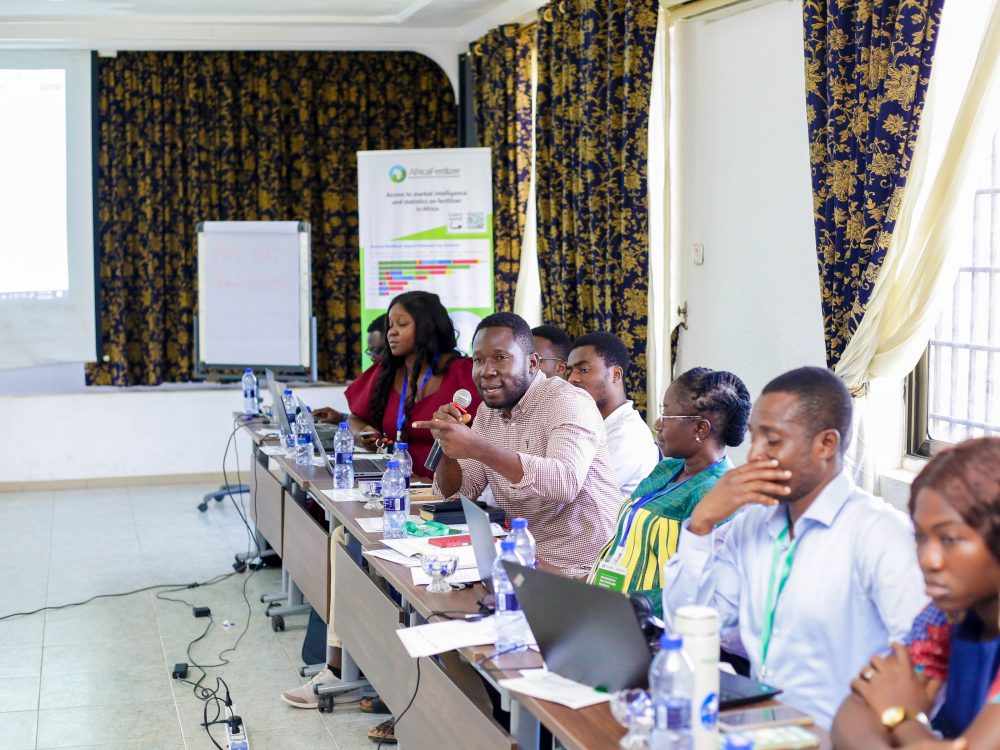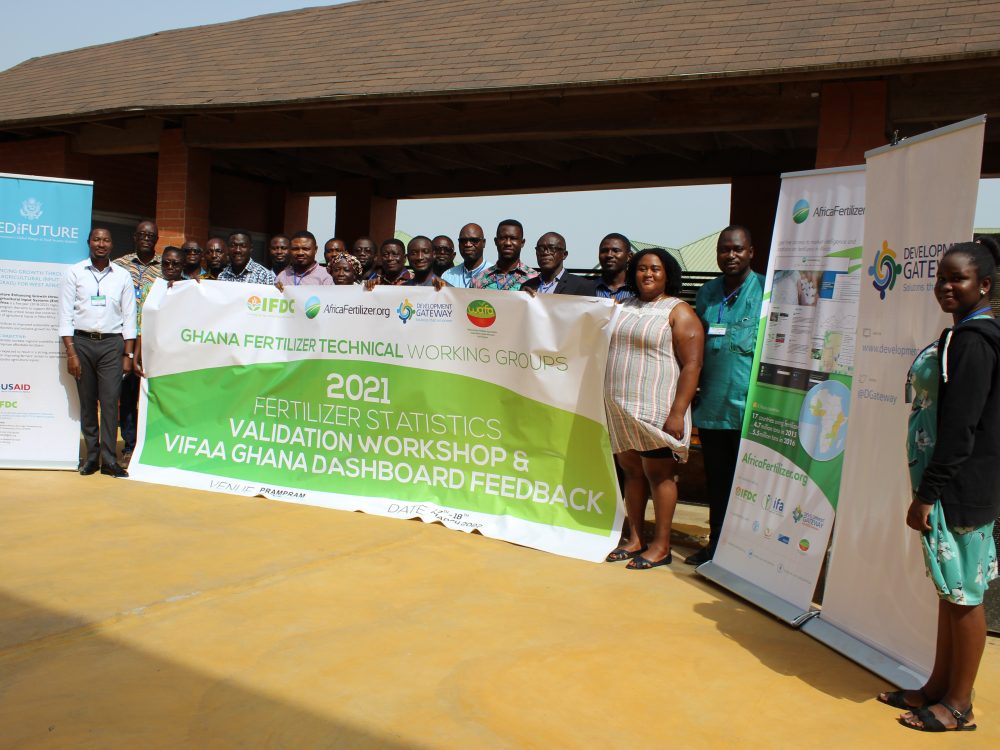Q&A with Folarin Okelola from National Agricultural Seeds Council
In summer 2022, Folarin Okelola, PhD, met with DGer Aminata Camara Badji to discuss Folarin’s work as the Technical Adviser to the Director General at the National Agricultural Seeds Council (NASC) as well as his collaboration with the Visualizing Information on Seeds Using Technology in Africa (VISTA) Program, which is led by Development Gateway: An IREX Venture (DG) in partnership with The African Seed Access Index (TASAI).
Folarin and NASC—an agency of Nigeria’s Federal Ministry of Agriculture and Rural Development tasked with the development and regulation of Nigeria’s seed industry—work with TASAI and plan to utilize the TASAI Dashboard.
DG and TASAI developed the Dashboard to support decision-makers in the public, development, and private sectors in visualizing and using data to support a fully functional formal seed system. By displaying 21 indicators from 17 African countries, the Dashboard allows for the assessment of seed quality, availability, and accessibility in individual countries and through cross-country comparisons.
Below are some key quotes and video clips from Folarin’s discussion with Aminata. The full interview can be viewed here.
How do you expect to use the TASAI-VISTA Dashboard?
“[The TASAI-VISTA Dashboard] will avail us to better and prompt information when we need it. And it means the work is there [for] comparison between countries. And it helps you to also have a link that you can share with your seniors—those above you—to say ok this is what I’m talking about…In Africa, seeing is believing, and it’s what we see that moves us.
So if you are talking to a very senior colleague about the report or the outcome of this study of TASAI and you’re talking physically, they may not really believe you. Just send them the link and say, ‘Check the link and you’ll see what I’m saying.’ Then they can see for themselves.”
In your work, which indicators or data do you find most useful to use?
“In the previous results of TASAI, some data particularly [regarding] the number of breeders, for example, has helped in actually speaking to policy-makers that we need more breeders. It has helped to also speak to the donors to sponsor more people to start breeding, because we have a little number of breeders. And also, the number of companies—you know—the rate at which companies are getting breeders on their payroll, we were able to show that. […] The TASAI-VISTA portal will be able to show this gap.”
What kind of decisions are you making based on this data?
“We make policy decisions, particularly in dealing with new companies. One example is the aspect of counterfeiting (the faking of seeds). The TASAI report brought these out clearly some years back, and it was one of what helped push for donor intervention—to say, we need to stem or stop the nefarious demand for this for the farmers, and then to the introduction of the SEEDCODEX.
There are other things that the TASAI resource has brought out before. I mentioned the Garden Variety Protection—it’s one clear gap in our seeds piece, and because of the report, we’ve been able to go to the government and say, ‘Yes, we need support.’”
How can the TASAI-VISTA Dashboard help you in your work, especially analysis and decision-making?
“For me, I’m very excited to start playing with the Dashboard. […] When you get familiar with [the Dashboard] many things you cannot imagine can come to the fore. So, I see more flexibility. I see more promise in everyone getting information much easier than it was with the pdf version. So, [we’re] just waiting for the launch, so we can hit the ground running.”
Share
Related Posts

From Data Gaps to Impact: Key Insights from the VIFAA Program
Over the last six years, DG, together with its partners AfricaFertilizer (AFO) and Wallace & Associates, collaborated to implement the Visualizing Insights on Fertilizer for African Agriculture (VIFAA) Program. In the program’s final year (2024), the team undertook a “program learning process” to reflect on outcomes, challenges, and successes through internal interviews. This blog captures five key learnings, which we hope will guide similar programs aiming to bridge data gaps in agricultural development.

Case Study: Fostering Sustainable Agriculture through Data-Driven Collaboration and Partnership: Ethiopia, Mozambique, and Nigeria
Through DG’s Visualizing Insights on Fertilizer for African Agriculture (VIFAA) program, we recently published a case study titled “Fostering Sustainable Agriculture through Data-Driven Collaboration and Partnership: Ethiopia, Mozambique, and Nigeria.” It dives deep into how the VIFAA program has impacted the fertilizer data and markets in Ethiopia, Mozambique, and Nigeria. In this blog, we explore the overall impact that the VIFAA program is making, why the program was needed, and offer some key highlights from the case study.

Fertilizer Technical Working Groups Provide Key Insights into Africa’s Fertilizer Sector
From June 2021 to September 2022, Development Gateway: An IREX Venture’s (DG’s) Visualizing Insights on Fertilizer for African Agriculture (VIFAA) program convened 12 Fertilizer Technical Working Groups in 14 countries which have yielded essential information on Africa’s fertilizer sector, including insights on how geopolitical events have impacted the fertilizer sector and what is needed to mitigate resulting threats to food security throughout Africa.



